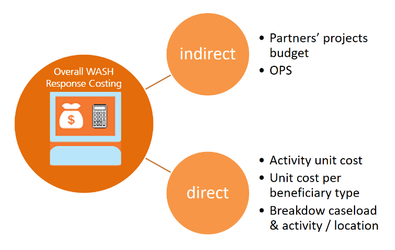...
| Expand | ||
|---|---|---|
| ||
| Expand | ||
|---|---|---|
|
Text
Test
text
Test
...
...
Estimate the overall WASH response funding requirement
HRP is also a funding appeal document, where funding requirements of each cluster are presented separately and consolidated to form the total funding requirement for the response. Each sector is responsible to estimate the budget needed to implement the sectorial strategy for the coming year/phase. This is a complicated task: many parameters must be considered, and many variables are still unknown during planning phase, which can change the overall budget. Nevertheless, response costing must be done quickly enough for funding to be allocated without delay. Even if estimations are rough, it is important to be transparent and be able to explain later how figures were calculated. Cluster response budget also represents a target, against which funding allocation will be regularly measured; funding monitoring figures are used as an advocacy tool in case of insufficient funding level.
| Response costing method |
As defined in the diagram, there are two ways for WASH Cluster coordinator to estimate WASH response budget:
1- Indirect costing: In protracted emergencies, in September, partners are requested to summarize and upload their planned projects for the next year on OPS website. Cluster coordinators can be asked to pre-validate their project making sure they meet minimum criteria. Operational Response Plan’s cost can be calculated by adding up requested budgets from all approved partner’s planned proposals. This method can be used in sudden onset emergencies
- Pros: quick, participative, field oriented, partners can in theory factor in their capacity
- Cons: can be very inaccurate:
- Partners have tendency to overestimate their funding requirements, and do not necessarily factor in access and capacity
- Difficult to estimate geographic/program overlapping. Partners will not do it between themselves, as they are anyway in competition for funding
- Subjective, based on partner’s estimation
2- Direct costing: WCC use caseload figures, priority activities and unit prices to estimate total response budget him/herself. Activities/beneficiaries unit costs can be estimated directly, or taken from partners’ former projects’ final report (reports’ budget are indeed preferred to proposal ‘s budget, as cost are usually more accurate).
| Tip | ||
|---|---|---|
| ||
